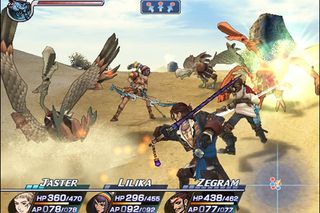Japanese developer Level-5 is all over the map these days. After finishing work on Dragon Quest VIII, the company is getting renewed attention from fans, partly thanks to its upcoming PS2 space-pirate epic Rogue Galaxy. But a lot of the interest is coming from the just-unveiled White Knight Story for PS3, which debuted in a stunning trailer at the Tokyo Game Show.
During TGS, we had an opportunity to sit down with Akihiro Hino, Level-5's CEO and president, and pick his brain about insect-fighting, changes to the American version of Rogue Galaxy and, of course, what we can expect to see when White Knight Story finally hits Sony's next-gen juggernaut.
We've heard there are some significant differences between the Japanese and American versions of Rogue Galaxy. Please tell us about them.
Akihiro Hino: First of all, Rogue Galaxy is... we’ve made the most number of changes compared to any of the titles we’ve ever worked on. The first and foremost change that we’ve made is actually an additional scenario for the US version, as well as an entire world, which we’ve never done before. Not only that, even the stages that were in the Japanese version - we’ve actually made a number of changes visually so they look very different from the Japanese version. And sheer volume-wise - we’ve increased features like new costumes for all the characters, as well as more items and even... the live chat system, where your companions will offer suggestions (on what they should do) during the battle... that has been expanded for the US version as well.

In regard to the... battle system, for the Japanese version we actually had a random combo system where a series of combo strikes would occur at random. But for the US version, we actually changed it to an entirely brand-new system called Burning Strike, where the users will actually incorporate that into their battle strategies to change the tide of battle instantly.

